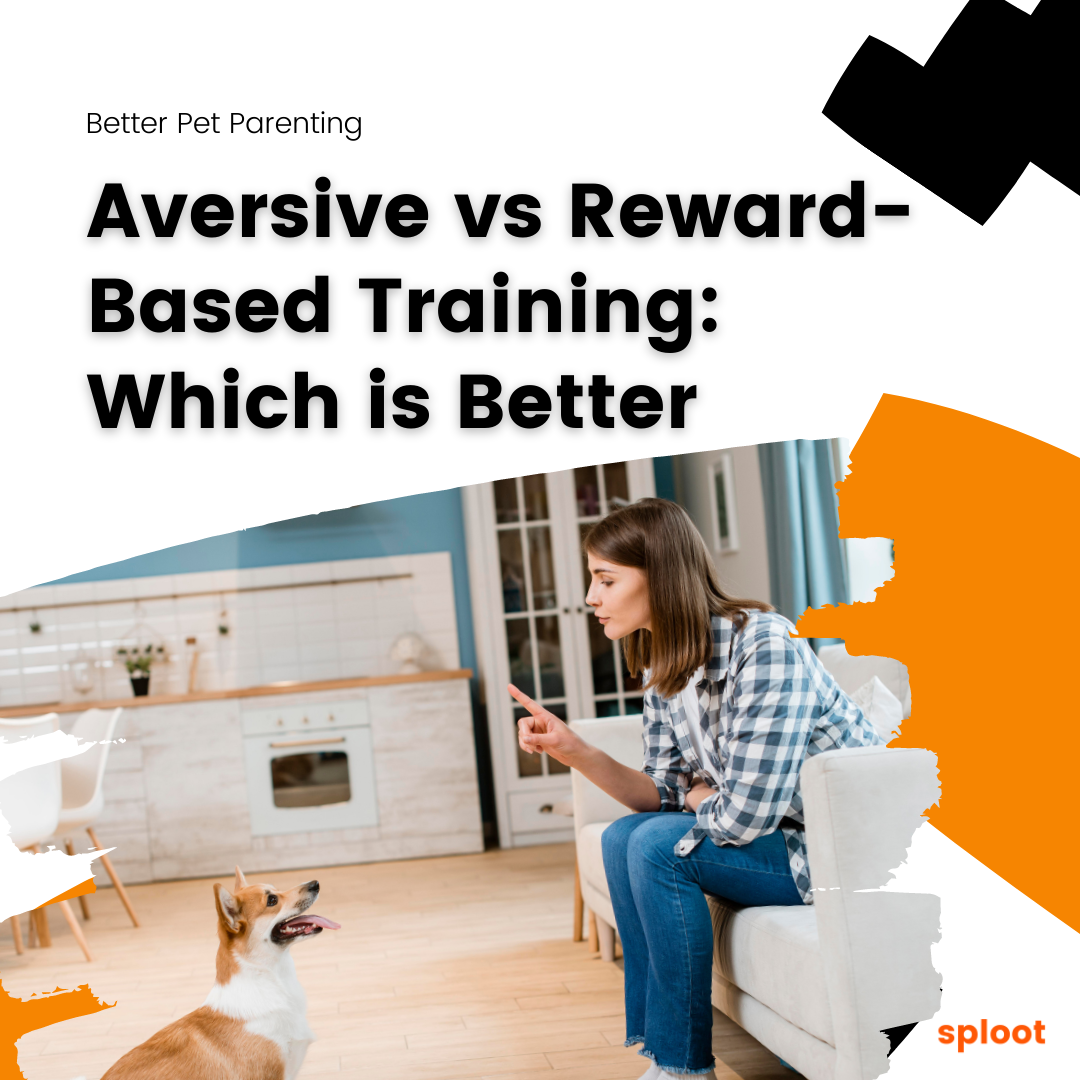Aversive vs Reward-Based Training: Which is Better For Your Dog

“Give the dog a good beating, and he will always listen to you”. This sentence is not uncommon to hear. A lot of people, including some trainers as well, have a notion that if you scare the dog enough, he will start listening to you. The American Veterinary Society of Animal Behaviour conducted research to find out the effects of aversive and reward-based training on a dog’s behaviour.
Dogs are no longer just watch-dogs or retrievers. Their bond with humans has evolved. AVSAB Emphasizes that they too need compassion and respect.
The study further states that:
1. Training methods are more effective when an animal is rewarded not when he is punished
The dogs who were trained with rewards were seen to be more obedient than those trained through pain or punishment. It is also assumed that a combination of both will result in balanced training.
This is especially seen for training a dog for the recall command using remote electronic shock collars. However, Even the balance doesn’t do any good. It was observed that dogs who were trained with their aversive methods were rather reluctant to learn new things.
2. Apart from teaching behaviour to the dog, the environment will also need to be planned
Training a dog according to how you want them to behave is very important. But at the same time, you will also need to make some changes in the environment. For example, if a certain thing triggers your dog, try to avoid those situations; or train him long enough to be comfortable in that particular time.
3. Aversive methods have a long-lasting negative effect on the dog’s physical and mental well being
Dogs that were trained using aversive methods showed signs of stress like lip licking, tail lowering, lifting the front leg, yawning, yelping, and panting.
Not just the physical signals, but these dogs also showcased problem behaviours like aggression towards strangers and other people, aggression because of fear, and anxiety as well.
4. It affects the human-dog relationship
In a study, Rooney and Cowan Found out that dogs that were trained with aversive methods did not interact with strangers in a relaxed play. They did not even interact with their owners.
However, the dogs that underwent reward-based training played more in presence of their owner, met them more excitedly than a stranger, and they also gazed at them from time to time.
Isn’t that how you would want your dog to behave around you, to feel safe and know that you are their person?
5. The stress hormones increase when aversive methods are used
Cortisol, also known as the stress hormone, increases when there is positive or negative emotional arousal. When studied with behaviour, the results confirmed that cortisol levels elevated quickly in dogs trained through aversive methods, than compared to dogs trained through rewards. Surely, you wouldn’t want your companion to go through an emotion like that.
Yes, you’ll require a lot of patience while training your dog. But when he looks at you, when he loves you, and when you will cherish the bond you two share- it will all be worth it.
To get assistance in training your dog, you can download the Sploot app, set up reminders for your dog’s training time, and enjoy the time with him!